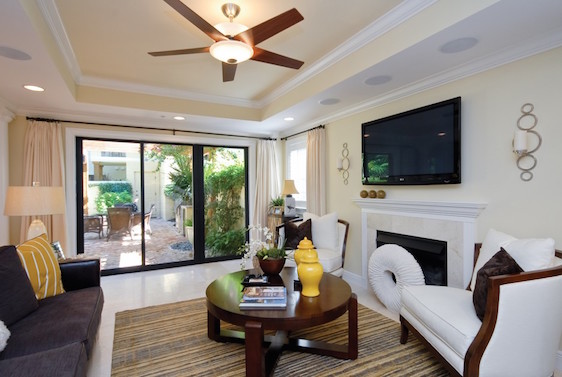
9 Ways to Cool Your House For Less
It’s blazing hot, but after opening your last utility bill, you don’t dare turn down the thermostat. You’re beginning to yearn for a summer place at the South Pole. Take heart! A variety of relatively simple measures can help you drop your thermostat’s mercury without raising your utility bill’s bottom line.
Arrange furniture and drapes so they don’t restrict airflow from registers. When cooled air is delivered to your rooms, it should move freely.
Keep room air moving by utilizing a whole-house fan or ceiling fans. Another option is to circulate air using the “Fan Only” setting on your heating/cooling system’s thermostat. By keeping the air moving, you will feel comfortable in a room that is 2 or 3 degrees warmer than a still room; every degree you raise your thermostat’s set point will save you about 2 percent on your energy bill.
Reduce your home’s heat gain by pulling drapes or shades–or installing awnings–over sun-facing windows. Also explore the possibility of installing inexpensive heat-reflecting film on those windows.
Increase your air conditioners efficiency by cleaning or replacing your furnace or air handler filters according to the manufacturers recommendations.
Install a programmable thermostat if your system doesn’t have one—and learn to use it properly. This will give you precise control over exactly when cooling will be delivered. Raise the thermostat’s set point a few degrees when you’ll be at work; if you’ll be gone for two days or more, turn off the air conditioner until you return.
Reduce humidity inside your home, because an air conditioner must work hard to remove moisture from the air. Minimize mid-day washing and drying clothes, showering, and cooking. Another option is to turn on ventilating fans, but be sure to turn them off when you’re finished so that they don’t extract cooled air unnecessarily from the house.
Weatherize your home to reduce the loss of conditioned air. Employ caulk, weather stripping, and insulation to cut back on the movement of air from inside to out—and vice versa.
Consider installing dampers in ductwork to restrict the flow of cooled air to rooms that you rarely use. Talk with an air conditioning contractor about this. You can also close doors or registers in those rooms, but ask a professional about this to be sure it won’t affect your system’s efficiency.
Update your air conditioner if it’s old. Though this is not a low-cost solution, over-the-hill equipment may be using far more energy than necessary to cool your home.
Article : hometips.com
photo courtesy: homedesignbee.com





